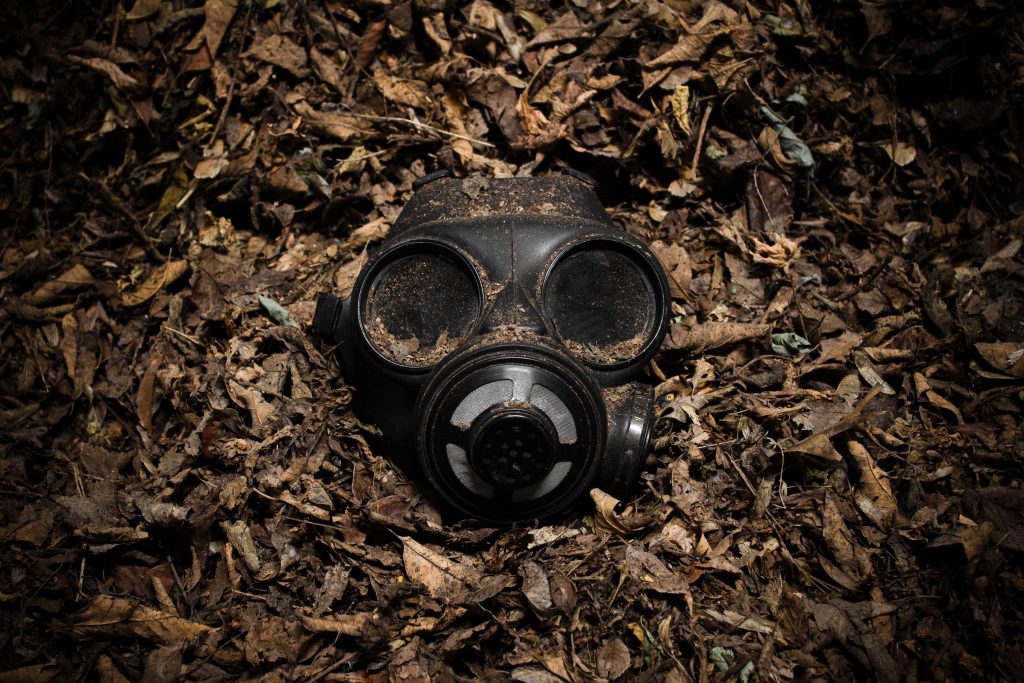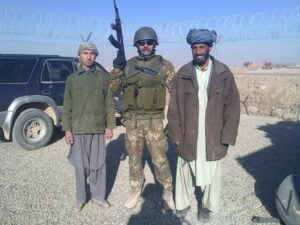Weapons have been a part of human history since the dawn of time. From primitive spears to modern-day drones, the arsenal of tools used for warfare and self-defense has evolved significantly. However, some weapons stand out as particularly dangerous, deadly, and destructive.

In this article, we will explore some of the most dangerous weapons in the world, delving into their capabilities, and potential consequences.
Nuclear weapons: These weapons are among the most destructive and deadly in the world, with the ability to cause widespread devastation and loss of life on a scale that is almost unimaginable. Nuclear weapons are weapons that use nuclear reactions to release a large amount of energy in the form of an explosive blast. They are among the most powerful and destructive weapons ever developed, with the ability to cause widespread devastation and loss of life on a massive scale.
There are two main types of nuclear weapons: atomic bombs, which use fission reactions to release energy, and hydrogen bombs, which use fusion reactions to release even more energy. Nuclear weapons can be delivered by a variety of means, including aircraft, missiles, and artillery shells.
The use of nuclear weapons is heavily regulated by international law and conventions, and many countries have signed agreements committing to not develop or use them. However, a number of countries around the world possess nuclear weapons, and the proliferation of these weapons remains a significant concern. The use of nuclear weapons could have catastrophic consequences for humanity and the environment, and efforts to prevent their use and proliferation are a top priority for many governments and international organizations.
Biological and chemical weapons: These weapons can also cause significant harm, as they can be used to spread diseases or toxic substances that can have serious health consequences for people exposed to them. Biological weapons are weapons that use living organisms or their products (such as toxins or enzymes) to cause illness or death in humans, animals, or plants. They can be delivered in a number of ways, including through the air, water, food, or by direct contact with the organism or its products. Some examples of biological agents that have been used as weapons include bacteria, viruses, and toxins.
Chemical weapons, on the other hand, are weapons that use chemical substances to cause harm or death. They can be delivered in a number of ways, including through the air, water, or by direct contact with the chemical. Some examples of chemical agents that have been used as weapons include nerve agents, blister agents, and choking agents.
The use of both biological and chemical weapons is prohibited by international law and conventions, and many countries have signed agreements committing to not develop or use these types of weapons. However, some countries have developed and stockpiled these weapons, and there are concerns about the potential for non-state actors to acquire and use them. The use of biological and chemical weapons can have serious consequences for individuals and populations, and efforts to prevent their proliferation and use are a top priority for many governments and international organizations.
Thermobaric weapons: Thermobaric weapons, also known as fuel-air explosives, are a type of explosive that releases a cloud of flammable vapor or gas before detonating. These weapons are designed to create a high-pressure shock wave and a devastating explosion that can cause significant damage to structures and personnel within the blast radius. Are often used to destroy buildings and other structures, as they are able to generate a much larger explosion than traditional high explosives. They can also be effective at defeating bunkers and other underground fortifications.
There are several different types of thermobaric weapons, including air-dropped bombs and missiles, ground-launched rockets, and handheld devices. Some countries have developed thermobaric weapons for use by their military forces, while others have banned their use due to concerns about their potential impact on civilians and the environment.
Weather Modification Weapons: Weather modification refers to the deliberate manipulation of weather patterns using various techniques (weather warfare). While some methods of weather modification, such as cloud seeding, have been used for decades to increase rainfall in certain areas, there are also more controversial ideas about using weather modification as a weapon.
One example of a weapon for weather modification is the use of cloud seeding with chemicals such as silver iodide or dry ice to induce rain or snowfall in targeted areas. This technique has been used for various purposes, including increasing water supplies and to suppress forest fires. However, it is not clear whether this technique is effective, and there are concerns about the potential environmental and health impacts of using chemicals in this way.
Another example of a weapon for weather modification is the use of high-power microwave or radio frequency (RF) energy to heat the Earth’s ionosphere and create weather effects. This technique, known as ionosphere modification or “ionospheric heating,” has been suggested as a way to disrupt communications, create earthquakes, and even trigger hurricanes. However, this technique is highly experimental and there is little evidence to support its effectiveness.
It is important to note that the use of weather modification as a weapon is highly controversial and is generally not accepted by the international community. Most countries have signed agreements prohibiting the use of weather modification for military or hostile purposes, and there are concerns about the potential environmental and social impacts of such activities.
Radiofrequency (RF) weapons: Radiofrequency (RF) weapons are weapons that use radio frequency (RF) energy, a type of electromagnetic radiation, to disrupt or damage electronic systems or cause harm to people. These weapons can be handheld or mounted on vehicles or aircraft, and they can operate at a variety of different frequencies.
One example of an RF weapon is the microwave auditory effect weapon, which uses high-power microwave energy to create a sound sensation in the human head. This effect has been demonstrated in laboratory conditions, but it is not clear whether it is effective as a weapon in real-world situations.
Another example of an RF weapon is the high-power microwave (HPM) weapon, which uses intense bursts of microwave energy to damage or destroys electronic equipment. HPM weapons have been developed for use in a variety of military and law enforcement applications, including disabling vehicles, aircraft, and missiles. However, these weapons are highly experimental, and their effectiveness has not been fully tested.
It is important to note that the use of RF weapons is highly controversial and is generally not accepted by the international community. Most countries have signed agreements prohibiting the use of RF weapons for military or hostile purposes, and there are concerns about the potential impacts of such weapons on human health and electronic systems.
Quantum computers: Quantum computers are a type of computer that uses quantum mechanical phenomena, such as superposition and entanglement, to perform operations on data. They have the potential to perform certain tasks much faster than classical computers, making them potentially useful for a variety of applications, including in the field of national security.
One potential use of quantum computers as a weapon is in the field of cryptography. Quantum computers can potentially break certain types of encryption that are currently considered secure, which could have serious implications for the security of sensitive information, such as military secrets or financial transactions.
Another potential use of quantum computers as a weapon is in the field of machine learning. Quantum computers can potentially be used to train machine learning algorithms much faster than classical computers, which could give an advantage to the military or intelligence agencies that have access to these technologies.
It is important to note that the use of quantum computers as weapons is highly speculative and is still in the early stages of development. There are also significant technical and logistical challenges to overcome before quantum computers can be used effectively in a military or intelligence context. Additionally, the use of quantum computers as weapons could raise ethical and legal concerns, as it could potentially enable the development of new capabilities that could be used in ways that are not currently regulated or understood.
Insider Release
Contact:
DISCLAIMER
INSIDER RELEASE is an informative blog. This blog discusses various topics. It is emphasized that the ideas and concepts, although based on research from official sources, result from free evaluations by the writers. The BLOG, in full compliance with the principles of information and freedom, is not classified as a press site.










Intriguing and somewhat terrifying to contemplate the range of weaponry discussed here. Particularly struck by the mention of quantum computers in warfare, an area that’s still developing. Let’s hope that these arms remain heavily regulated and are mitigated by international agreements for the sake of global peace and security.
Your contemplation on the range of weaponry, especially the mention of quantum computers in warfare, highlights the evolving nature of technology and its potential implications. The intersection of advanced technology and warfare indeed poses both intriguing possibilities and concerns.
The hope for stringent regulation and international agreements to mitigate the risks associated with such weaponry is crucial for global peace and security. Establishing ethical guidelines and frameworks for the development and use of emerging technologies, including quantum computing in the context of warfare, is paramount.
As these technologies continue to advance, ongoing dialogue and collaboration on an international scale will be essential to ensure responsible and ethical practices. Striking a balance between technological progress and the preservation of global stability remains a complex challenge that requires careful consideration and cooperation among nations.
It’s definitely intriguing and a bit daunting to think about the advances in military technology, especially with something as cutting-edge as quantum computing entering the arena. The potential for quantum computers to revolutionize warfare, and not always in reassuring ways, is a reminder of the double-edged sword that is technological progress. Your hope for heavy regulation and international agreements is a sentiment many share. It’s crucial that as we develop these powerful tools, we also advance our strategies for maintaining peace and ensuring global security. Your thoughts highlight the importance of ethical considerations in technological advancement. Thanks for engaging with this critical discussion—it’s conversations like these that push for a more secure and peaceful world.